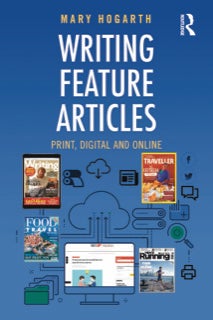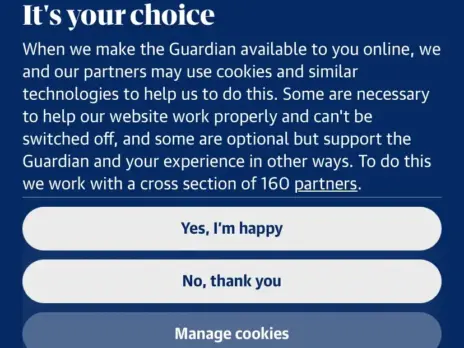
University lecturer, author and media consultant Mary Hogarth shares her tips on feature writing.
There is no shortcut to good writing. Whether you are writing for print or online, aim to engage, inform and entertain.
An excellent feature requires meticulous research. Writers must find the right market, come up with a viable idea and develop a sharp angle before securing first-class interviews with appropriate experts.
Here are five pillars for enhancing your skills, which have evolved from my latest book, Writing Feature Articles (pictured below), published by Routledge.
Five tips on how to write a feature article:
1) Find the right market
A good writer begins by finding the right audience for their work before developing the content.
I suggest selecting three possible outlets, then researching each one to determine the most suitable in terms of editorial pillars and audience, before narrowing it down to one title.

Always check that your chosen publication has not run a similar feature before undertaking an in-depth study of its audience needs and the house-style.
Analyse article lengths, writing styles, and tone to capture those subtle nuances.
2) Develop a strong angle
Articles need compelling angles, from which you can then develop a headline.
Write the headline first before crafting the rest of the content. Why? Because without a headline an article can lack clear direction, which might impact on the structure and would be unlikely to engage the commissioning editor.
Furthermore, the headline will help you determine who to interview and the questions to ask
3) Keep it factual
Always keep to the facts. Avoid including your opinion or general comments, because unless you are a bonafide expert on the subject about which you are writing, such content is likely to downgrade your article.
Undertake background reading, in-depth research and find viable interviewees.
For example, if writing a piece on professional sports coaching find a high-profile expert rather than going to your local gym and cornering the personal trainer.
4) Provide added value
In this digital age, an article needs added value, be it a short audio piece, video clip, or a well-chosen infographic.
If writing for a print magazine, think of your article in terms of a theme with additional components that can be published online.
For example, if writing a piece on the impact of alternative therapies on dementia, the print article could focus on how alternative therapies can support dementia patients.
While the online article – perhaps titled My Story – could be an interview with a relative of a dementia patient explaining how or if such therapies had helped, written up in the first person.
A short video of an actual therapy session or a soundbite from a therapist explaining the core benefits could also add further impact.
5) Edit your work
Never send in your first draft.
Always edit the first draft to address any awkward sentences or potentially unanswered questions in the text, while the third read is for proofreading purposes.
Writing Feature Articles: Print, Digital And Online is out now.
Picture: Pixabay
Email pged@pressgazette.co.uk to point out mistakes, provide story tips or send in a letter for publication on our "Letters Page" blog






